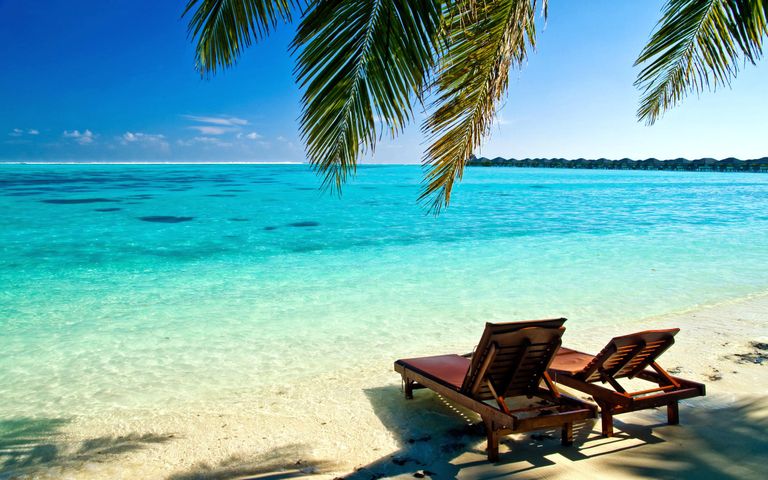Taking a summer vacation?!? Click here to read how to leave your AC set....

Summertime means a lot of different things to a lot of different people. For those in school it means stretched out and blended together weeks of sun-soaking laid back fun. For the working population it means weekends at the pool and grill mixed in with lots of time in the sweet air conditioning of movie theaters, cafes, and, of course, home. But, for many, summer also represents the season in the year that most likely will be accompanied by a little reprieve from normal life, in the form of a vacation.
Vacations are universally loved and for plenty of good reasons. It represents a break, a new landscape, a little variety which makes up the spice of life. You might be planning a little summer vacation any day now. But just because you might leave your house for an extended period of time doesn’t mean you can forget about it. Just like people, home's need attention and care, in order to remain in tip top shape. The way you leave your thermostat and your air conditioner over your vacation can make a big difference in everything from mold growth to your energy bills and the health of your air conditioner. Which is why in this tip of the day we’re going to go into some of the best practices for how to leave your air conditioning when you’re gone on a summer vacation.
Don’t Turn That AC Off!
One of your first instincts you might be tempted to follow when you leave on summer vacation is to just switch off the thermostat entirely and let the air conditioner lay dormant over the course of the trip away. It makes perfect sense why so many people consider this approach. After all, it sure would save you some significant money on your next energy bill if the normal source of energy draining in your household, the AC, wasn’t a factor for this period of time.
Think twice though. If you turn it off, the air won’t circulate, meaning it has time to condensate, when can lead to mold and other problems. While it may be tempting to turn the AC off entirely, remember that all your windows and doors will be locked and shut while you’re gone. Depending upon the size of your home, it can turn a smaller apartment into a sauna.
This can be bad for your house and the things inside it in a number of ways, besides just the possibility of mold growth. Remember, those who lived in the sweltering South before air conditioning kept their windows open constantly. Combined with the high ceilings, this set up a natural ventilation system. When you’re away, all your doors and windows are sealed. If it’s 90 degrees outside, the inside of your home can reach triple digits easily within a week.
Don’t forget your electronics! Laptops and other devices start to have trouble at anything above 95 degrees Fahrenheit. When the temperature outside is 90 degrees, your house can easily heat up to 100 degrees or more in the daytime. It is a better idea to leave the system turned on with a slight modification to the settings. This applies to manual and automated thermostats.
In fact, even setting your thermostat too high, so that it essentially is never turning your air conditioner on anyway, will have this same effect of letting your house get too hot. So, be careful not to set the temperature too high because high temperatures can damage surfaces such as wood floors. Remember that wood expands when exposed to heat, so the last thing you want to return home to is a buckled and warped floor. Leaving your air conditioner on when you go on vacation can save your home from serious damage and doesn’t have to cost a lot of money.
The Temperature Sweet Spot
So, you’re going away for vacation and you don’t want to waste energy and money keeping your house perfectly chilled while you’re gone. That’s smart and a worthwhile goal, but we’ve just been over how this can go too far the other way if you just switch your air conditioner off entirely. So what is one to do? You’ve got to find a happy medium, a happy medium between completely off and therefore dangerously hot inside, with that lack of ventilation to boot, and unnecessarily cool.
Why exactly bother with raising the thermostat in the first place? Energy usage is the biggest reason. After all, why waste the money to cool your house if no one is there to enjoy it? Studies have shown that every degree you raise your thermostat setting during the summer can save you around 3 percent on your energy bills, so if you usually set the temperature to 72 degrees, cranking it up to 85 degrees could save you as much as 39 percent on your bills for the time you’re gone.
Just don’t go overboard with your energy saving or you’ll end up with a situation like we talked about in the last section, with all the negative effects of too hot and humid a house. If you turn your system off completely or raise the level 10 degrees or more than its normal setting, your house may overheat and become filled with humid air. That combination can lead to wall damage if the sheetrock gets moist. It could also provide the perfect breeding ground for mold and mildew in tight, sweaty corners around appliances and throughout your vent system. When you return and lower the thermostat to your comfort level, your HVAC system may have to work so hard to lower the temperature that it could experience problems.
The trick is to save money while you have fun in the sun. You want to strike a happy medium between saving money and being overly aggressive in your settings. If you ask an AC repair technician what the ideal thermostat setting should be while you are gone for your summer fling, the answer would be 4 degrees more than the usual level. If you normally keep your home at 72 degrees, raise it to 76 degrees. With that slight adjustment, you will save money and avoid problems that could arise if your home becomes too hot while you are on vacation.
If you want to go the distance and really save some money, you could raise your thermostat up to the maximum suggested summer temperature for your home, which is about 85 degrees, according to some experts. Setting the temperature at 85 degrees may mean you have a warm home to return to, but you’ll be able to keep your AC unit in good condition without wasting energy. Experts recommend that if you live in a hot climate, it is best not to set your thermostat higher than 85 to 90 degrees to protect any temperature sensitive building components or appliances, like your refrigerator.
Make It Easier With a Programmable Thermostat
All of these benefits of raising the thermostat some while you’re away and saving energy in doing so can be achieved with any old thermostat. But with a programmable thermostat, this job becomes even easier and more beneficial potentially as well.
There are a lot of misconceptions regarding how thermostats work and, thus, how to properly employ them to save energy in your house. So let’s start with the basics: what is a programmable thermostat? A programmable thermostat is a control switch that turns your HVAC system on or off to reach a desired interior temperature. In most cases, the thermostat does not affect the volume of air being used to heat or cool your house, or the temperature of the air.
Adjusting the thermostat when you leave on vacation, or anytime you are not at home, will save energy for all heating and cooling systems, regardless of the length of time you will be away. A programmable thermostat is designed to save energy by decreasing the temperature differential between the outside and the inside. When the thermostat is set back, your HVAC system will turn off while your house “coasts” to the set back temperature and then will maintain that higher temperature.
Take advantage of this when you’re on vacation and you can maximize energy savings while minimizing the risk of humidity and high temperatures mucking up your home. Since programmable thermostats allow you to set different temperatures for different times of day when you’re not around, there are a few slightly more complicated tricks you can do for even more savings.
Schedule your thermostat to drop to 71 degrees during the early morning hours of 3:00-5:00 in the morning. Humidity peaks around these hours, and a low thermostat will remove the extra moisture. For the rest of the day, you can set your thermostat all the way up to 90 degrees. This will help you save even more money than if you keep your thermostat steady at 85 degrees.
Summer is all about fun, and a well deserved vacation is the epitome of this spirit. But don’t forget that your house is still experiencing this barrage of hot summer heat all the meanwhile. Luckily, it doesn’t take much to make sure your air conditioner takes care of the house while you’re away. A little adjustment of the thermostat is all that’s needed to make sure humidity and high temperatures are kept at bay while still using as little energy as possible.
And if you ever need AC repair this summer, consider ADE Heating and Cooling Inc.!!
609-693-6050
NJ Master HVACR Lic # 19HC00400200
NJ Master HVACR Lic # 19HC00136200
NJ Master Plumbing Lic # 36B100668500
About the Business
Have a question? Ask the experts!
Send your question

